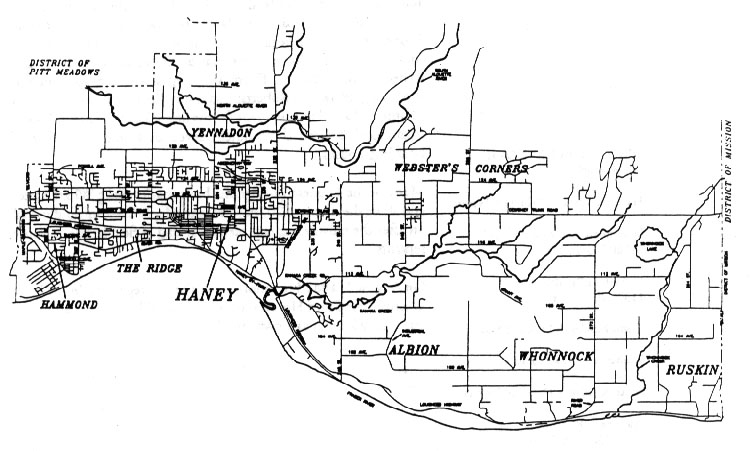Whonnock - a brief history

First Nations people lived in this area for thousands of years.
The first permanent white settler and landowner in Whonnock was the Shetlander Robert Robertson who settled in Whonnock in 1861 with his Indigenous wife. Few followed Robertson's example until the early 1880s, when the railroad built a station in Whonnock.
Robertson and the early settlers named the settlement Whonnock after the adjacent First Nation village. The name was used in a variety of contested spellings. Aside from a railway station - first called Wharnock - the community boasted a school, a general store and a number of churches.
Whonnock soon became the focal point for settlers all over the eastern part of Maple Ridge as well as Glen Valley across the Fraser and on lands across the Stave River.
Most of the new residents were of British descent and but Norwegian migrants also played a significant part in the early history of the community. In general the settlers made their livelihood fishing and logging.
Subsistence farming was effectively the only kind of farming in this poor neighbourhood but a few residents developed small-scale commercial fruit growing and poultry farming.
From the 1920s until their expulsion in 1942, the Japanese settlers made good use of the soil for extensive berry farming. Click here to read about Japanese properties.
Lumberyards and mills continue to be active on the waterfront until the present day but on a much smaller scale than before.
Women, through the church and other organizations, played an important part in the shaping of community life. In 1912 they the created and started operating a community hall that remained the centre of social activities for some forty years. It was the precursor of the present Whonnock Lake Centre.
Click here for recommended further reading.
Heritage
Whonnock Whonnock chapter of Donald Luxton's The Heritage Resources of Maple Ridge, April 2018. Click here to download
